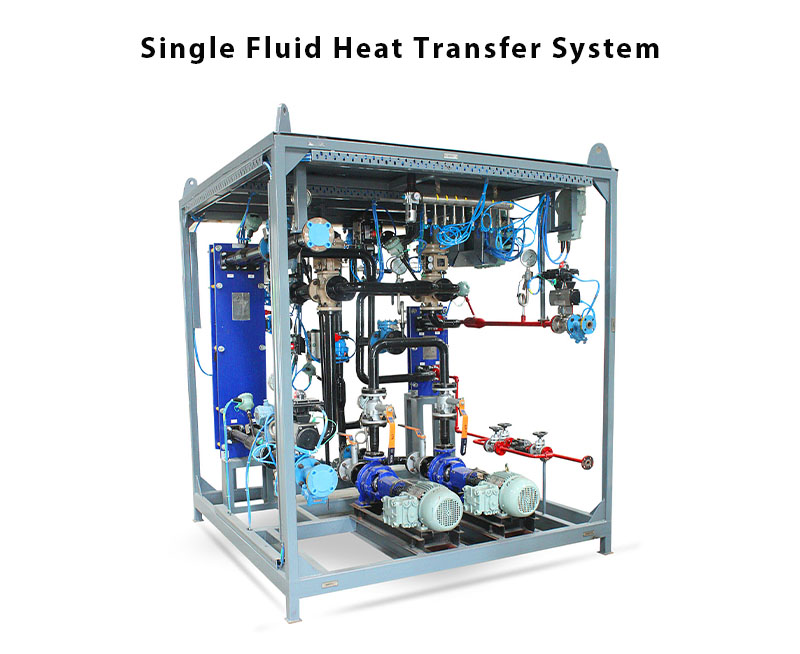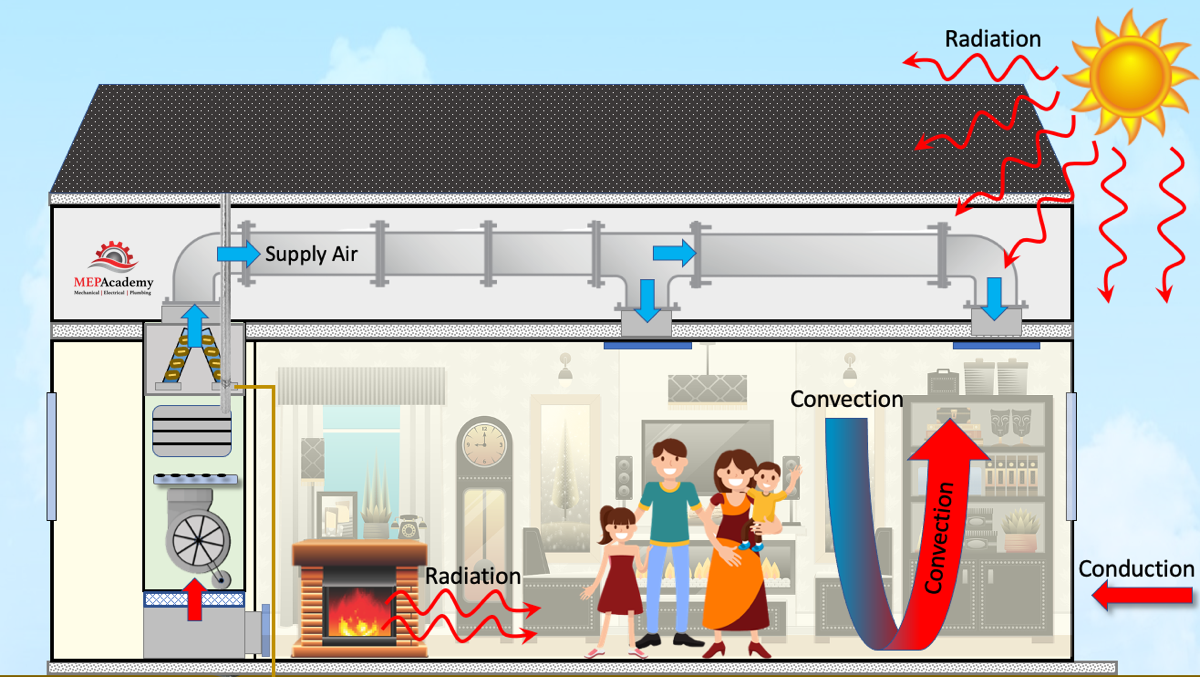A Comprehensive Guide to Selecting the Right Heat Transfer Systems for Your Needs
Selecting the appropriate Heat transfer system is important for operational efficiency. Different systems deal with various requirements, affected by variables such as temperature range and liquid kind. Recognizing the principles behind Heat transfer, such as radiation, convection, and conduction, is essential. Additionally, evaluating energy sources and upkeep techniques can impact long-term efficiency. A closer exam of these considerations exposes exactly how to tailor a system to certain demands. What should one prioritize in this complicated decision-making process?
Comprehending Heat Transfer: Trick Concepts and Concepts
Although Heat transfer may appear like an uncomplicated concept, it encompasses a variety of principles that are basic for effective system layout. Comprehending these principles is vital for engineers and developers who aim to maximize thermal efficiency in numerous applications. Conduction, for instance, involves the transfer of Heat with strong products, while convection refers to the movement of Heat within fluids. Radiation, one more crucial principle, explains just how Heat can be transferred via electro-magnetic waves. Each of these systems plays an essential role in establishing how energy moves within a system. By extensively comprehending these principles, specialists can make educated choices, guaranteeing that Heat transfer systems run effectively and fulfill the details demands of their applications
Kinds of Heat Transfer Systems: A Review
Understanding the concepts of Heat transfer lays the groundwork for checking out the different sorts of Heat transfer systems readily available. Heat transfer systems can be classified mainly right into three types: convection, conduction, and radiation. Transmission involves Heat transfer through solid products, depending on straight call in between bits. Convection, on the other hand, occurs in liquids (gases and liquids) where the activity of the liquid itself helps with Heat transfer. Radiation entails the transfer of Heat through electro-magnetic waves and does not require a medium, enabling it to occur in a vacuum. Each type of system has distinctive attributes and applications, making it vital for individuals and companies to thoroughly analyze their details requirements when choosing the most suitable Heat transfer service.
Applications of Heat Transfer Solutions in Different Industries
Heat transfer systems play a necessary function throughout numerous industries, impacting performance and item high quality. In commercial production processes, they assist in exact temperature control, while in food and drink processing, they guarantee safety and security and conservation. Additionally, HVAC and climate control systems count greatly on effective Heat transfer to keep comfy atmospheres.
Industrial Manufacturing Processes

Countless industrial production procedures depend heavily on effective Heat transfer systems to take full advantage of efficiency and boost product quality. In industries such as metalworking, Heat exchangers play an essential function in maintaining optimal temperature levels during welding, casting, and forging. These systems assure consistent Heat distribution, which is crucial for attaining desired product buildings. In the chemical manufacturing market, Heat transfer systems assist in exact temperature level control throughout reactions, influencing return and safety and security. In fabric production, efficient Heat administration is essential for dyeing and ending up procedures, affecting color uniformity and material quality. By choosing proper Heat transfer modern technologies, suppliers can boost energy effectiveness and decrease operational expenses, eventually resulting in an extra competitive and lasting production environment.
Food and Drink Handling
Reliable Heat transfer systems are just as crucial in the food and beverage processing industry, where keeping perfect temperature levels is crucial for food security and quality. These systems play an essential role in processes such as sanitation, food preparation, and pasteurization, making certain that products are secure for consumption and preserve their nutritional worth. Heat exchangers, as an example, effectively move Heat between fluids, optimizing power use while decreasing temperature variations. In addition, refrigeration systems are fundamental for extending and protecting perishable items life span. The selection of Heat transfer modern technology straight influences operational effectiveness and item honesty, making it critical for food and beverage suppliers to pick the appropriate systems tailored to their specific processing requirements. This mindful selection eventually adds to customer complete satisfaction and food safety and security.

A/c and Environment Control
While many markets rely upon Heat transfer systems for efficiency, HVAC (Home Heating, Ventilation, and Air Conditioning) plays a crucial function in maintaining indoor climate control throughout numerous setups. These systems use Heat transfer principles to manage humidity, air, and temperature high quality, ensuring comfort and security in household, commercial, and commercial environments. Effectively designed cooling and heating systems enhance power efficiency, minimize functional expenses, and lessen environmental effect. In industrial buildings, for example, reliable environment control adds to employee performance and consumer satisfaction. In industrial applications, cooling and heating systems help preserve excellent conditions for equipment operation and item conservation. Choosing the appropriate Heat transfer system is essential for conference particular climate control needs and attaining overall system performance.
Examining Power Sources for Heat Transfer Systems
In examining power sources for Heat transfer systems, a comparison of renewable power alternatives and nonrenewable fuel source factors to consider is essential. Renewable sources, such as solar and wind, offer lasting choices that can lower environmental influence. Alternatively, nonrenewable fuel sources stay widespread as a result of their established framework and power density, prompting a careful assessment of both options.
Renewable Resource Options

Fossil Fuel Factors To Consider
Examining fossil fuel factors to consider is necessary for the effectiveness and sustainability of Heat transfer systems. Nonrenewable fuel sources, such as gas, oil, and coal, are conventional power resources that provide substantial Heat output, making them popular options for industrial and residential applications. Their environmental effect, consisting of greenhouse gas exhausts and source depletion, increases concerns. When picking a heat transfer system, it is essential to evaluate the schedule, price, and regulatory elements associated with these gas. In addition, the performance of fossil gas systems should be taken into consideration, as greater effectiveness can mitigate some ecological downsides. Inevitably, a well balanced technique weighing efficiency and sustainability can guide decision-makers towards the most suitable Heat transfer remedy for their certain demands.
Variables to Consider When Choosing a Warm Transfer System
Picking an ideal Heat transfer system needs cautious factor to consider of numerous variables that can see this considerably affect efficiency and performance. One crucial element is the operating temperature array, which dictates the products and layout ideal for the application. Furthermore, the kind of fluid made use of in the system-- whether gas or liquid-- impacts Heat transfer performance and compatibility. The system's dimension and ability have to straighten with the certain requirements of the operation to prevent ineffectiveness. Energy source schedule is also crucial, affecting operating expense and sustainability. In addition, the setup environment, consisting of room restrictions and availability for maintenance, plays a substantial duty in system option. Ultimately, regulatory conformity and safety and security criteria need to be thought about to guarantee the system fulfills all lawful demands.
Maintenance and Performance Optimization for Heat Transfer Solutions
Preserving Heat transfer systems is important for making certain optimal effectiveness and long life. Routine maintenance activities, such as cleaning up Heat exchangers and evaluating insulation, aid protect against performance losses as a result of fouling and thermal connecting. Additionally, monitoring system specifications, including stress and temperature, permits very early detection of anomalies, decreasing downtime and costly repair work. Carrying out a preventative maintenance routine can maximize performance and prolong the life-span of components. Additionally, updating to advanced control systems can boost functional effectiveness by getting used to differing lots and problems. By focusing on upkeep and performance optimization, drivers can attain reduced power intake, reduced operational expenses, and enhanced overall system dependability, inevitably leading to better resource utilization and a much more sustainable procedure.
Future Patterns in Heat Transfer Technologies
As markets significantly prioritize sustainability and energy performance, future fads in Heat transfer innovations are readied to undergo considerable makeovers. Developments such as sophisticated materials, consisting of carbon nanotubes and nanofluids, assure boosted thermal conductivity and performance. Additionally, the assimilation of eco-friendly power sources right into Heat transfer systems is gaining momentum, promoting eco-friendly remedies. Smart technologies, including IoT sensing units, are anticipated to transform tracking and control, allowing real-time data evaluation for enhanced efficiency. The growth of modular and compact systems will certainly facilitate easier installation and maintenance, providing to diverse applications. These advancements show a change towards even more sustainable, effective, and adaptable Heat transfer services, straightening with worldwide power goals and ecological requirements.
Frequently Asked Concerns
What Are the Ecological Impacts of Heat Transfer Systems?
The ecological influences of Heat transfer systems can consist of greenhouse gas discharges, power usage, and prospective thermal pollution. In addition, incorrect disposal of inadequacies and products can add to resource exhaustion and community disturbance.
How Do I Calculate the Cost-Effectiveness of a Warmth Transfer System?
To compute the cost-effectiveness of a warm transfer system, one have to evaluate preliminary prices, operational expenses, upkeep demands, and energy performance, comparing these elements versus the expected life-span and performance of the system.
Can Heat Transfer Solution Be Made Use Of in Residential Setups?
Heat transfer systems can indeed be utilized in domestic setups. They supply efficient home heating and cooling services, making homes a lot more comfy while possibly decreasing energy costs. Their adaptability enables various applications in property settings.
What Safety Regulations Apply to Heat Transfer Systems?
Safety and security regulations for Heat transfer systems usually consist of guidelines on operation, maintenance, and installation. Compliance with regional building ordinance, maker specs, and sector criteria is crucial to assure effective and secure system efficiency in different applications.
How Do Different Products Affect Heat Transfer Efficiency?

Transmission, for instance, entails the Your Domain Name transfer of Heat via solid materials, while convection refers to the movement of Heat within fluids. Understanding the principles of Heat transfer lays the groundwork for exploring the various types of Heat transfer systems available. Heat exchangers, for circumstances, successfully transfer Heat in between liquids, maximizing energy use while lessening temperature changes. In reviewing power sources for Heat transfer systems, home a contrast of eco-friendly energy options and fossil fuel considerations is vital. Metals, such as copper and aluminum, conduct Heat properly, whereas insulators like rubber and glass reduce down Heat circulation.